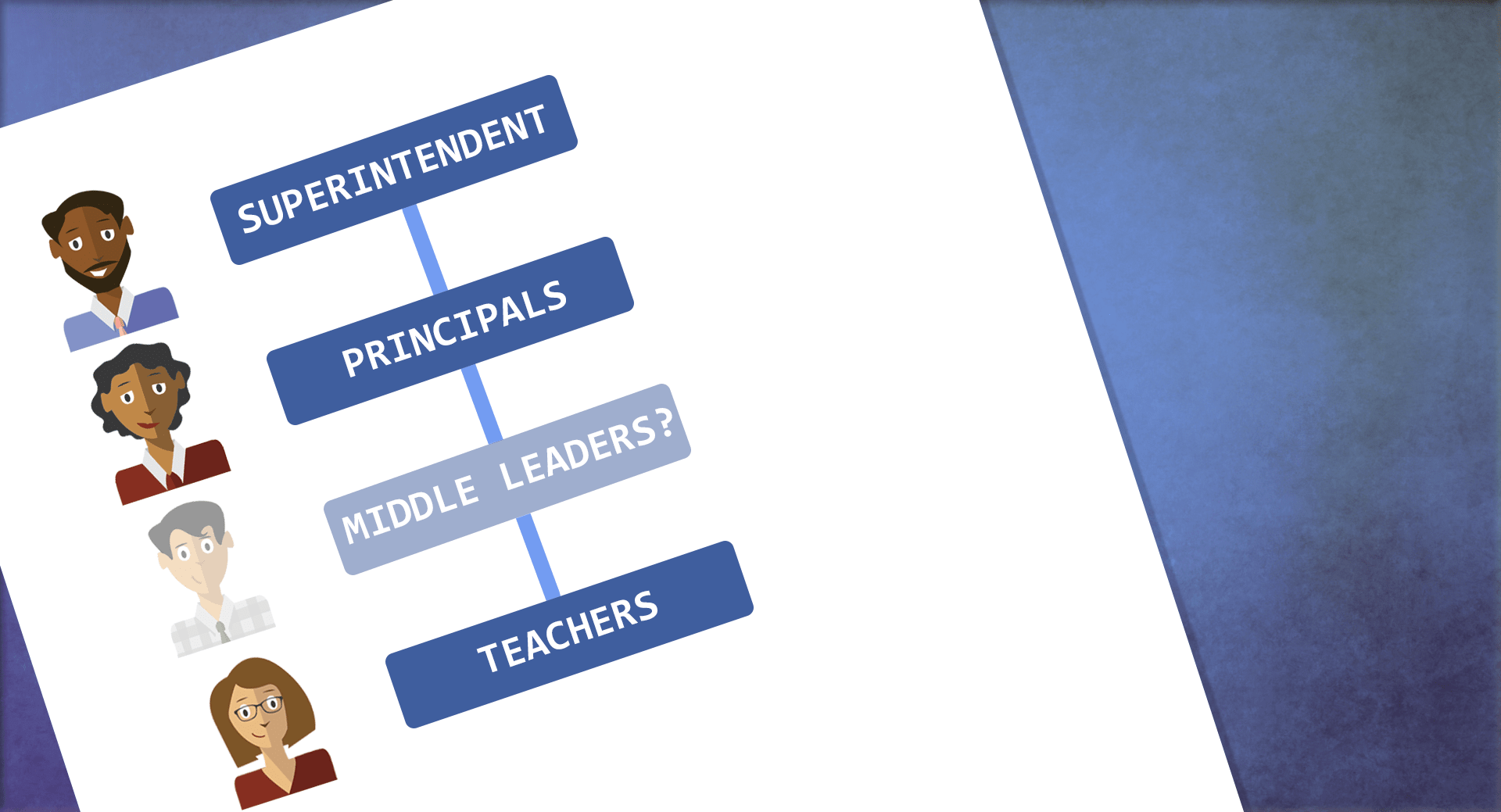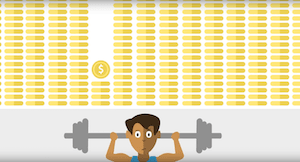
There’s a gaping hole in the traditional K-12 leadership structure, and it’s simultaneously diminishing and demoralizing our teacher workforce.
We already know that teachers today are lacking some of the basic employment perks we find in other fields. There’s no clear pathway to leadership roles. Tiers of support are limited. Mentoring and feedback systems are often outdated or inconsistent. Leadership training (despite its obvious parallels to effective pedagogical development) is rarely offered as a PD opportunity.
One glance at a typical company’s org chart will reveal multiple levels of leadership and a clearly defined chain of command. Schools, on the other hand, often feature an entire teaching workforce reporting to just one principal. The result is fewer feedback opportunities– and a greater disconnect between the leaders in the front office and the leaders at the front of the classroom. We have no problem talking about the benefits of smaller classrooms, but then we fail to apply the same logic to our educators.
There is a fix for this, so long as we’re willing to look beyond our borders. Several high-performing school systems around the world have introduced an official level of leadership between principals and teachers. They’re called “middle leaders,” and their primary focus is helping teachers improve instruction.
Could middle leadership help address the teacher culture issues in our own schools?
Middle Leadership: Defined
In the U.S. we have, at best, a piecemeal approach to middle leadership. Department heads, teacher leaders, and instructional coaches come closest to this role, but their leadership responsibilities are often tacked on to an already full teaching schedule (usually without a pay bump,) leaving these nominal leaders with little remaining in the way of time, energy, or resources to, you know, lead. Those who manage to do so successfully power through on the strength of their passion alone, but burnout is always a concern. The very last thing you want to do is turn your most effective leaders into less effective teachers.Because their official status in a school’s hierarchy is often muddled, these makeshift middle leaders don’t often have the influence that “true” middle leaders—those with clearly defined supervisory positions – can have.
So what makes true middle leadership different? Simply put, a middle leader’s primary role is to lead a team of teachers. This takes the observation, coaching, and development of teachers out of the principal’s hand, which in turn frees up the principal to focus on system leadership and school-wide initiatives. When middle leadership is a well-defined, well-supported role in the system, effective teachers can stay in the classroom and drive change from the inside out.
A Growing Leadership Gap
Administrators and teachers in the U.S. are being stretched thin–and the numbers show it.The U.S. has a teacher attrition rate that’s twice that of most high-performing countries, and half of our principals leave within just five years of taking on the role. The need for another level of support–a bridge between these two ever-expanding roles–has become evident. Also in the 2021-2022 school year, principal attrition increased by 13 percentage points (thirteen!) from pre-pandemic years. The need for another level of support – a bridge between these two ever-expanding and ever-more-fragile roles–has become evident.
Across the pond, England has spent the past 15 years refining its leadership system—not from the top down, but from the middle. The country has clear policies undergirding their new system, along with well-defined roles and effective support for their squad of middle leaders. And England is not alone in these efforts—middle leadership is becoming a stronger focus throughout the rest of the U.K., as well as in other high-performing countries like Australia, New Zealand, Canada, and Singapore.
Stronger Middle, Stronger School
Even the most fervent education reformer knows better than to look for silver bullets, but middle leadership has the potential to strengthen our K-12 system at every level while enticing more of our country’s top talent to enter the teaching profession.Students: What is the answer to the escalating achievement gaps that continue to dominate the education discussion? Part of it is making sure the classroom teachers have the time and energy to focus on the issue. Middle leaders function at that “critical junction” where they can improve consistency of teacher quality both within and between departments by creating a support network and a sharing of resources, among other strategies.
Teachers: Most teachers love to be in the classroom (those who don’t may not be in the right profession), but they also crave new ways to contribute and grow their careers. Right now, those who set their sights on school leadership have relatively few options available when they’re ready to test the waters. Providing a way for high-performing educators to stay close to students, help their colleagues thrive, and take a legitimate step in their careers is a win-win-win.
Principals: You know the principal attrition problem mentioned above? With middle leadership, you can attack the problem from two fronts. Principals might be more likely to stay when they’re not stretched so thin, and you’ll have a built-in succession plan in place in the event that they do leave. Experienced leaders are hard to come by, but middle leadership roles will increase your talent pool many times over.
Core Challenges
The question we should be asking ourselves is, “Can we afford not to?”Lest this start to seem like a utopian vision, let me be the first to say: middle leadership is not without its challenges.
Since a middle leader is accountable to both teachers and administrators, there is a high potential for role ambiguity and conflict. Uncertainty about job descriptions or expectations of the position can lead to increased stress, increased workloads, and decreased effectiveness.
The need to add new positions (or restructure based on existing staffing levels) is always going to raise budget concerns, but it is important to note that any additional payroll costs will be defrayed by the reduction in turnover that would come with a successful, and highly supportive middle leadership program. The snowball effect of this simple reorg would have a lasting positive impact on the entire system.
As we continue to learn about the impact of inconsistent teacher effectiveness, wage discrepancies, and dwindling interest in the profession, it might not be a matter of figuring out whether we can afford to create a middle leadership program.
Leadership and professional development matter, but the workforce is changing at a rapid pace. Learn more about the millennial generation's take on workplace culture in How to Win a Millennial’s Loyalty.
WHAT'S NEXT FOR YOUR EDTECH? The right combo of tools & support retains staff and serves students better. We'd love to help. Visit skyward.com/get-started to learn more.

|
Lindsey Canny Edtech Thought Leader |
Lindsey Canny is a marketing copywriter for Skyward, Inc., a school administration software provider based in Stevens Point, WI. Prior to working at Skyward, Lindsey spent eight years teaching 9th and 10th grade English within the Stevens Point community. Outside of work she enjoys reading books and spending time with her husband and cat.




